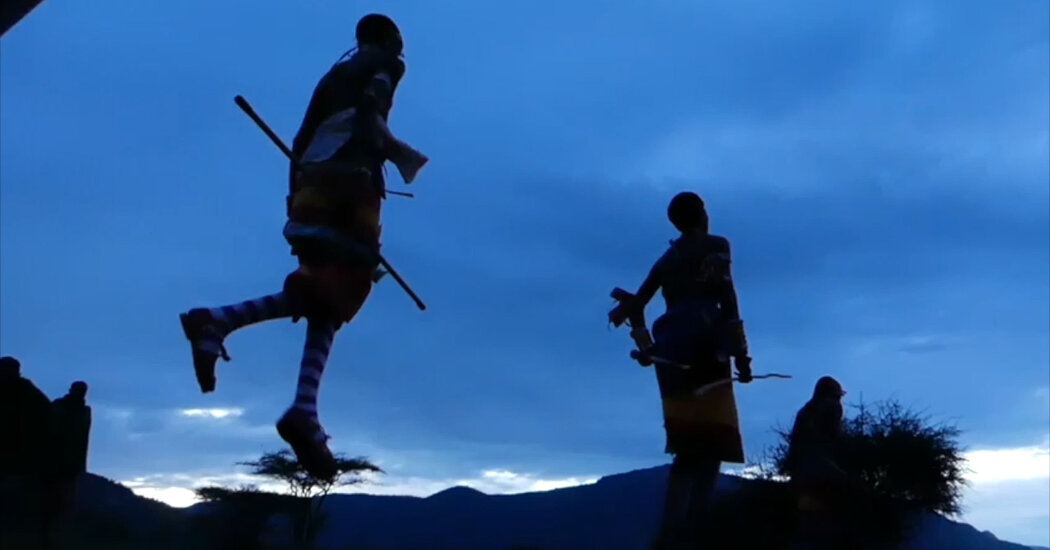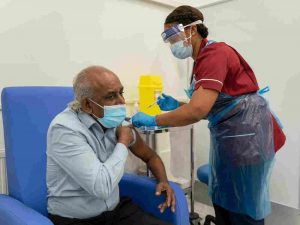Deborah, 14, narrowly escaped genital cutting and child marriage during the pandemic.
Princess, 12, rescued as a newlywed at just 9 years old, is still at high risk.
Nasanoi, 10, was forced to undergo genital cutting along with two other girls, one of whom was married immediately after.
Every two seconds across
the globe, an underage girl
is forced into marriage.
Jacinta, 10, was married in August.
Over the next decade, an
extra 13 million child
marriages could result
from the pandemic.
Deborah, 14, narrowly escaped genital cutting and child marriage during the pandemic.
Every 2 seconds across
the globe, an underage girl
is forced into marriage.
Princess, 12, rescued as a newlywed at just 9 years old, is still at high risk.
Nasanoi, 10, was forced to undergo genital cutting along with two other girls, one of whom was married immediately after.
Over the next decade,
an extra 13 million child
marriages could result
from the disruption caused
by the pandemic.
Jacinta, 10, was married in August.
Supported by
Child, Bride, Mother: Kenya
In Samburu County, economic and social strife from the pandemic is helping turn a generation of girls into commodities.
Ms. Sinclair is the founder and executive director of the nonprofit organization Too Young to Wed. Mr. Kipainoi is a videographer.
- Dec. 10, 2020, 5:00 a.m. ET
A deep, sonorous melody pierces the night sky when young Samburu warriors celebrate an impending marriage. These songs, which echo across the arid plains of rural northern Kenya, are beautiful. They also often herald danger for girls in the region’s pastoralist communities — and during the coronavirus pandemic, they’ve grown alarmingly more frequent.
Selected by her family to marry an older man she’d never met, 10-year-old Jacinta was taken from her bed in Samburu County early one morning in August and doused in a mixture of milk and water before being painted from head to toe in red ocher — the traditional preparations for a genital cutting ceremony, a near-compulsory procedure for Samburu girls on the cusp of marriage.
“I didn’t know they would marry me off,” said Jacinta, speaking from her husband’s home through a translator. But when she was subjected to the cutting, often called female genital mutilation, she said, “I realized I was going to be married off.”
As the world has focused on combating the coronavirus, a parallel pandemic no less devastating has struck communities like Jacinta’s. Curfews, quarantines and lockdowns to suppress the virus have aggravated existing economic and social strife; these conditions, in turn, have hurt efforts to combat child marriage and genital cutting.
For now, information about child marriages and genital cutting in the pandemic remains largely anecdotal. Accurate data on rates of child marriage in Kenya and elsewhere is difficult to come by in normal times. Cases are only infrequently reported to law enforcement, and communities dispute the legitimacy of national laws against child marriage and cutting.
But the pandemic appears to be leading to a surge in child marriages and the cutting ceremonies that can precede them — a young bride can fetch a considerable price, securing livestock, blankets, food and money for her struggling parents and siblings. Girls are also being coerced into sex in exchange for basic necessities, leading to unexpected pregnancies that in turn create pressure to marry.
“Covid-19 has just been a disaster — These girls are being cut and married in droves,” said Sayydah Garrett, the co-founder and president of the Pastoralist Child Foundation in Samburu County.
Josephine Kulea, founder and executive director of the Samburu Girls Foundation, said her organization had referred more than 500 new cutting and child marriage cases to the authorities between March and September, a steep rise over previous periods.
Young men celebrating a wedding in Samburu County, Kenya.
‘Us girls are being denied our rights. If the area chiefs were enforcing the rules, this problem of F.G.M. and marrying young girls off would be over.’
‘They get pregnant and get children. Now their lives are destroyed.’
‘Only very few girls have not gotten pregnant. If the schools had opened earlier, we could have gone back.’
‘I didn’t go home when schools closed because I was told I’d be married off. During this time of Covid, there are a lot of problems that we face, especially the girls who have no parents.’
And according to Domtila Chesang, founder and director of the I Rep Foundation in West Pokot County, another pastoralist area in Kenya, forced marriages and cutting have spiked during the pandemic. “Girls are not safe in their own homes,” she said in a broadcast interview with my colleague. “With time, things are going to skyrocket.”
Sexual violence against girls surged by 230 percent after schools closed this spring, according to calls logged from March to September by the national child protection hotline. Because gender-based violence is consistently underreported worldwide, this number is likely to be a gross underestimate; it doesn’t account for tens of thousands of girls without access to phones or the knowledge that they can call for help.
Elii, 10
‘During Covid-19, we were subjected to F.G.M. It was painful … just painful.’
‘My sister and I were circumcised because of corona. We were with another girl and she was married. We still live in fear.’
‘Now we are at home, a lot of people are eyeing us, and they really want to marry.’
‘If one girl stands up for her rights, the father will learn to consult his daughters when he wants to marry them off.’
Before the pandemic, an underage girl somewhere in the world was forced into marriage every two seconds. With Covid-19 still on the rise, the United Nations says an additional 13 million child marriages could occur over the next decade — the result of factors from the consequences of the economic slowdown to the disruption of programs seeking to prevent these marriages.
In northern Kenya, the pandemic has combined with the effects of climate change and the sudden loss of safari tourism. Naeku, 15, had been studying at boarding school — a safe haven providing critical support beyond education — when her school suddenly closed in the spring and she had to return home. She found a household battling starvation.
“Sometimes we go hungry and can’t find clothes to put on,” she said. That’s why her mother “started marrying us off,” she said, referring to herself and her sisters, “so that she can find money to bring up her other children.”
Despite national laws and international agreements against child marriage, it remains a persistent threat to the human rights, lives and health of girls in more than 100 countries.
Kenya, in fact, has outlawed child marriage and genital cutting. But while President Uhuru Kenyatta has pledged to eradicate child marriage by the end of this year and cutting by 2022, turning aspirational statements into real change is difficult work, even without a pandemic.
Girls in nations that have not taken such steps have likely fared far worse.
Yet Mr. Kenyatta seemed to undercut his pledge in July by cracking down on clinics offering contraceptives to underage girls, saying the practice encouraged promiscuity. Experts worry that as more girls become pregnant, their fears of the social and economic consequences of revealing their pregnancy, combined with clinic closures and the disruptions of the supply of abortion pills, will lead to an escalation in unsafe, makeshift abortions.
In the best of times, girls still lag in pastoral communities in Kenya when it comes to the keys to upward mobility, such as access to secondary education, and are among the last to receive resources. For millions of girls forced to marry and give birth during this pandemic, how do we salvage their rights to safety, health and education?
At minimum, girls who survive these traumas need financial support, reproductive and mental health care, child care and the resources to return to school. The authorities must prosecute perpetrators. Chiefs and other authorities should aid girls in annulling their marriages. In the Dedza District of Malawi, the paramount chief, Theresa Kachindamoto, told me she had annulled about 2,549 child marriages over the years.
More global and local investment is critical to prevent further harm to vulnerable girls around the world, including rigorous accountability mechanisms and enforcement of policies. To lead by example and reinforce a commitment to protecting girls, the United States must also bring its domestic laws in sync with its global rhetoric by restoring a federal ban on genital cutting and enacting one on child marriage.
These are critical concerns for girls like Jacinta who hoped for, and deserved, so much more.
“I really wanted to go to school,” she said softly. “I really wanted to become a teacher.”
Stephanie Sinclair, a Pulitzer Prize-winning photojournalist, is the founder and executive director of the nonprofit organization Too Young to Wed. Jeremiah Kipainoi is a photographer and videographer and the host of the podcast “End F.G.M.” Moses Letitoyia, Nancy Leaduma and Elina Lanyasunya contributed translation and reporting. The Wallace Global Fund provided support for this project.
Advertisement



















